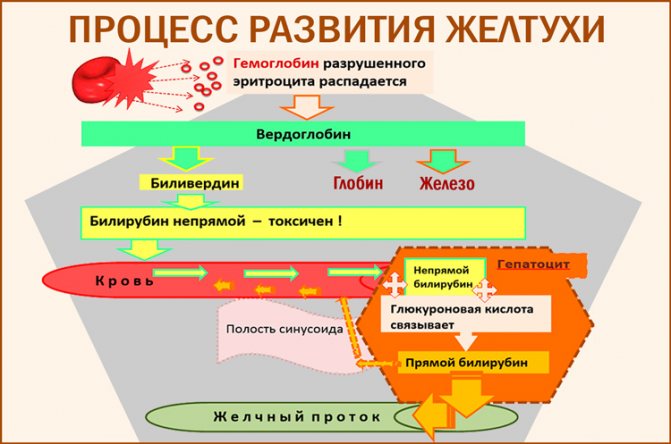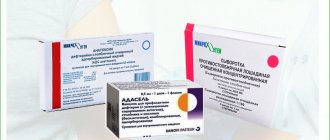Hepatitis A is mild and has no complications. It is common in developing countries with low sanitary and hygienic levels. On the territory of the Russian Federation, vaccination against Botkin's disease is not included in the mandatory immunization schedule, but is still recommended by doctors.
As for hepatitis B, the pathology is characterized by pronounced symptoms and severe complications. If left untreated, it leads to death.
In this article we will look at how many hepatitis vaccinations are given, what contraindications and complications of vaccination exist.
Risk group
Immunization against the causative agent of hepatitis type B is mandatory for infants at risk:
- mother is a virus carrier;
- close relatives have hepatitis or are infected;
- the pregnant woman was infected in the third trimester;
- parents are injection drug addicts;
- if it is necessary to carry out frequent blood transfusions (blood transfusions);
- before the upcoming surgery.
In this case, vaccination against jaundice is included in the list of mandatory vaccines. If parents refuse immunization, the child is at risk of infection. They take responsibility for his life during the development of a serious illness.
Hepatitis A virus vaccine is recommended:
- half a month before traveling to hot countries or areas with an increased risk of infection;
- in the presence of chronic liver pathology;
- for hemophilia;
- in the first 10 days after contact with the patient. In this case, immunity will have time to develop before the end of the incubation period of Botkin’s disease;
- health workers;
- military personnel;
- homosexuals.
Before vaccination, a laboratory blood test is prescribed. This is necessary to detect antibodies.
Immunization is indicated in their absence. If immunoglobulins G are detected, it means that the person has had hepatitis A and has developed immunity.
Characteristics of the pathology
Hepatitis is a viral infection of the liver that causes degeneration and death of its cells. A weakened organ becomes unable to remove toxins and other decay products, so the death of the body gradually occurs.
There are several varieties:
- The most harmless and widespread is the hepatitis A virus; almost all residents of countries with low economic levels suffer from it.
- Hepatitis B is one of the most dangerous types, often ending in the death of a person even after recovery. Every tenth case ends up being infected with hepatitis D, which causes liver cancer and cirrhosis.
- Hepatitis C is a serious disease, but treatable.
The most noticeable sign of hepatitis is jaundice - the appearance of a characteristic shade on the skin and mucous membrane of the eyes.
Immunization against pathology is necessary due to the resistance of the virus. The pathogen can withstand prolonged exposure to low and high temperatures.
Currently, there are only vaccines against hepatitis A and B. Timely vaccination is sometimes the only way for children and adults to protect themselves from the consequences of infection.
What is the vaccine?
Genetic engineering methods are currently used to produce vaccines. During its production, part of the virus is removed and placed in a yeast cell, where the production of “built-in” proteins begins. The culture medium is then removed and the material is cleaned. By adding preservatives and other components, a vaccine against a specific virus is obtained.
The following types of vaccinations against type B virus are used in the Russian Federation:
- the most popular Regevak B;
- Eberbiovac;
- Recombinant yeast;
- Engerix V;
- Biovac.
It is advisable to carry out a full course of immunization with vaccines from one manufacturer, but substitutions are also not prohibited.
There are several types of Botkin vaccinations:
- Havrix (UK) and Avaxim (France) are used from one year of age;
- Vaqta from two years (made in the USA);
- Hep-A-In-Vak from three years old. Produced in Russia.
All of them contain a killed virus. It is not capable of causing disease and being transmitted to other children, but it can activate the process of immunity formation. The instructions for the hepatitis A vaccine indicate the specifics of storing the vaccine, namely at a positive temperature of 2-8 degrees. Freezing is prohibited.
To assess the effectiveness of immunization, a laboratory blood test is carried out to analyze the stability of the formed protection against the virus.
Are there age limits?
The hepatitis A vaccination regimen for adults and children involves 2 stages. The vaccine can be administered from one year of age until the age of 55. Immunization is usually recommended before school, as well as travel to developing hot countries. After the first injection, it may take 6-18 months before the second injection. Thus, a single vaccination provides protection for 1.5 years, and subsequent vaccinations for up to 20 years.
If Hep-A-In-Vac is used, the scheme is as follows: an injection, then a month's break and a second injection. The third vaccination is performed six months later. A full course of vaccination provides protection against Botkin for 20 years or more.
The injection is given into the anterior femoral surface of a child under two years old, then injection into the shoulder is allowed. When getting vaccinated against hepatitis, it is necessary to follow the rules of asepsis, which will reduce the risk of complications. Immunization against Botkin and tuberculosis (BCG) cannot be carried out simultaneously.
Intravenous administration of the vaccine is prohibited.
How many times a hepatitis vaccine is given depends on the type and age of the person. To form immune protection against the type B virus, 4 injections are required:
- immediately after birth;
- after 4 weeks;
- in six months;
- after 12 months.
If immunization is intended for adolescents, there is a slightly different scheme, according to which three administrations at six-month intervals are sufficient. This allows you to create protection for 20 years. Adults should receive the vaccine before traveling to countries with an increased risk of infection, with frequent contact with contaminated blood (health care workers), and with regular hemodialysis.
There is also an emergency immunization scheme;
- first injection;
- a week later;
- after two weeks;
- revaccination after a year.
If more than five months have passed since the first injection, vaccination should begin again.
Possible complications
Human immunization is carried out only if there are no contraindications. However, it is not always possible to avoid side effects and complications. They are often associated with poor quality of the vaccine, allergies to its components and insufficient examination of the child before vaccination.
Before giving an injection, the doctor must examine the skin, throat, measure the temperature, palpate the abdomen, lymph nodes, listen to the lungs and heart. You also need to ask about concomitant acute and chronic pathologies. If necessary, laboratory tests may be prescribed.
Among the unwanted side effects, it is worth highlighting two groups of manifestations. Local ones include:
- swelling of the tissue at the injection site;
- itchy sensations;
- compaction;
- redness;
- numbness;
- slight soreness.
You should not be afraid of local symptoms. They will go away on their own in 4 days. It is strictly forbidden to cover the injection site with a plaster, bandage, or lubricate it with any creams. As for the general manifestations, it is necessary to highlight:

hyperthermia up to 38 degrees;- general malaise;
- arthralgia and myalgia (muscle and joint soreness);
- allergic reactions to vaccine components (Quincke's edema);
- exacerbation of chronic diseases;
- damage to the nervous system (meningitis, neuritis, multiple sclerosis) develops in the presence of contraindications that were not taken into account before vaccination;
- inflammation of the vascular walls (vasculitis);
- decreased blood pressure;
- dyspeptic disorders in the form of nausea, vomiting and intestinal dysfunction;
- headache;
- poor appetite;
In order to promptly suspect the development of complications and provide assistance, it is necessary to stay in a medical facility within an hour after vaccination. Due to the fact that the vaccine causes a temporary decrease in immune defense, infection of the body is possible in the first days after its administration. It is recommended for a person:
- avoid contact with those suffering from viral diseases;
- avoid visiting places with large crowds of people;
- do not scratch the injection site;
- do not drink alcohol;
- do not eat exotic foods that were not previously present in the diet.
It is advisable to follow these recommendations in the first five days after immunization, which will reduce the risk of complications. As for walks in the fresh air, on the contrary, they are very useful. Do not wet the injection site in bodies of water with contaminated water.
Adverse reactions are often observed when using domestic vaccines. Complications after administration of Havrix are extremely rare.
If allergic signs appear, it is necessary (in agreement with the pediatrician) to give the child an antihistamine. In order to normalize the temperature during hyperthermia, taking antipyretic medications (Nurofen) is indicated.
Indications and contraindications
This procedure, like any other, has its own indications. Not everyone with allergies can use it.
ASIT therapy is prescribed in the following cases:
- For hay fever;
- Severe reactions to animal hair and house dust;
- Conjunctivitis due to allergies;
- Bronchial asthma;
- Hives;
- For some manifestations of food allergies;
- When the patient is ready to undergo treatment.
If pregnancy occurs during treatment, there is no need to interrupt the course, but treatment should not be started during pregnancy.
When should the ASIT course not be used? An obstacle to treating allergies using this method is:
- Immunodeficiency;
- Diseases of blood vessels and heart;
- Bronchial asthma in severe form;
- Oncological pathology;
- Use of beta blockers;
- The presence of infections and diseases in acute form;
- Mental disorders.
The use of the technique is also not recommended for children under 5 years of age.
During treatment, allergies may occur, but if all recommendations are followed and standardized vaccines are used, side effects are practically eliminated. This method today is the only recognized and proven safe for treating allergies. The timely start of treatment has an impact on achieving a lasting effect.
Contraindications
There are certain contraindications that limit immunization. These include:
- allergic reactions to vaccine components, including yeast;
- congenital dysfunction of the immune system, which does not make it possible to form full protection against hepatitis;
- diathesis. Vaccination is carried out only after complete cleansing of the skin from the rash;
- diseases of the nervous system. For meningitis, injection is permitted six months after recovery;
- exacerbation of chronic pathology;
- acute infectious diseases;
- severe congenital diseases;
- pregnancy;
- weight less than two kilograms.
Vaccination may be temporarily delayed if the child has diarrhea, weakness, poor appetite and low-grade fever. This is necessary to determine the cause of this condition.
Side effects and complications
Protecting the body from infection through vaccination may be accompanied by various side effects. Among them, the most common ones are:
- nausea, sometimes vomiting;
- intestinal disorders;
- muscle weakness;
- temperature (if it was caused by vaccination, then it does not rise above 38 degrees);
- drowsiness;
- loss of appetite;
- headache;
- swelling, itching and numbness in the injection area.
It should be noted that after repeated vaccination, side effects occur much less frequently. And if they do appear, they are blurry in nature.
Is hepatitis vaccination required?
Despite the numerous contraindications and the likelihood of complications, it is still not recommended to refuse immunization. The Botkin vaccine is not included in the mandatory vaccination schedule, but one should remember the risk of severe disease, development of liver failure and death without timely medical care.
As for hepatitis B, in this case immunization is mandatory, according to the order of the Ministry of Health. It is important to understand that a child can become infected both on the playground and in the clinic during a routine blood draw.
Often, parents refuse vaccinations based on scary stories about serious complications of vaccination. At the same time, they forget about the serious consequences of hepatitis, which can be fatal.
It is especially important to vaccinate a child at risk and protect yourself from hepatitis before traveling to countries with a high probability of infection. Here are some reasons that encourage immunization:
- Every year the number of people with hepatitis is growing rapidly;
- after vaccination, the disease (if it does develop) is mild and does not lead to complications;
- Considering the likelihood of a pathology with scant symptoms, it may go unnoticed at the initial stage, which predisposes the infectious-inflammatory process in the liver to become chronic.
Immunization is the responsibility of every person. An adult must understand how important it is to make the right decision before vaccinating a child, because he is responsible for his health and life.
What types of jaundice require vaccination?
Jaundice is one of the symptoms of hepatitis development. It comes in 4 types, but, unfortunately, at the moment scientists have only managed to develop vaccines against 2 of its varieties - A and B. The first has another name - Botkin's disease and is very common in Russia. Hepatitis is transmitted through the nutritional route, through contaminated food and water. Often found in children and adults. Unlike other types, it is easily amenable to drug treatment, but only if it begins in a timely manner.

Hepatitis B can be easily contracted through contact with mucous membranes or wounds of a patient. It occurs in acute, protracted and chronic forms, provokes rapid death of liver cells and is often accompanied by cirrhosis. This disease complicates the treatment process several times, causing death of organ tissue and disruption of the outflow of fluid from the abdominal cavity. Taken together, these conditions significantly worsen the patient’s quality of life and require systematic medical supervision.
The body affected by the virus ceases to cope with infectious agents, therefore, with the development of these diseases, the risks of hepatitis C and D increase several times, which, unlike the above-mentioned diseases, are practically untreatable and in 90% of cases lead to death.










